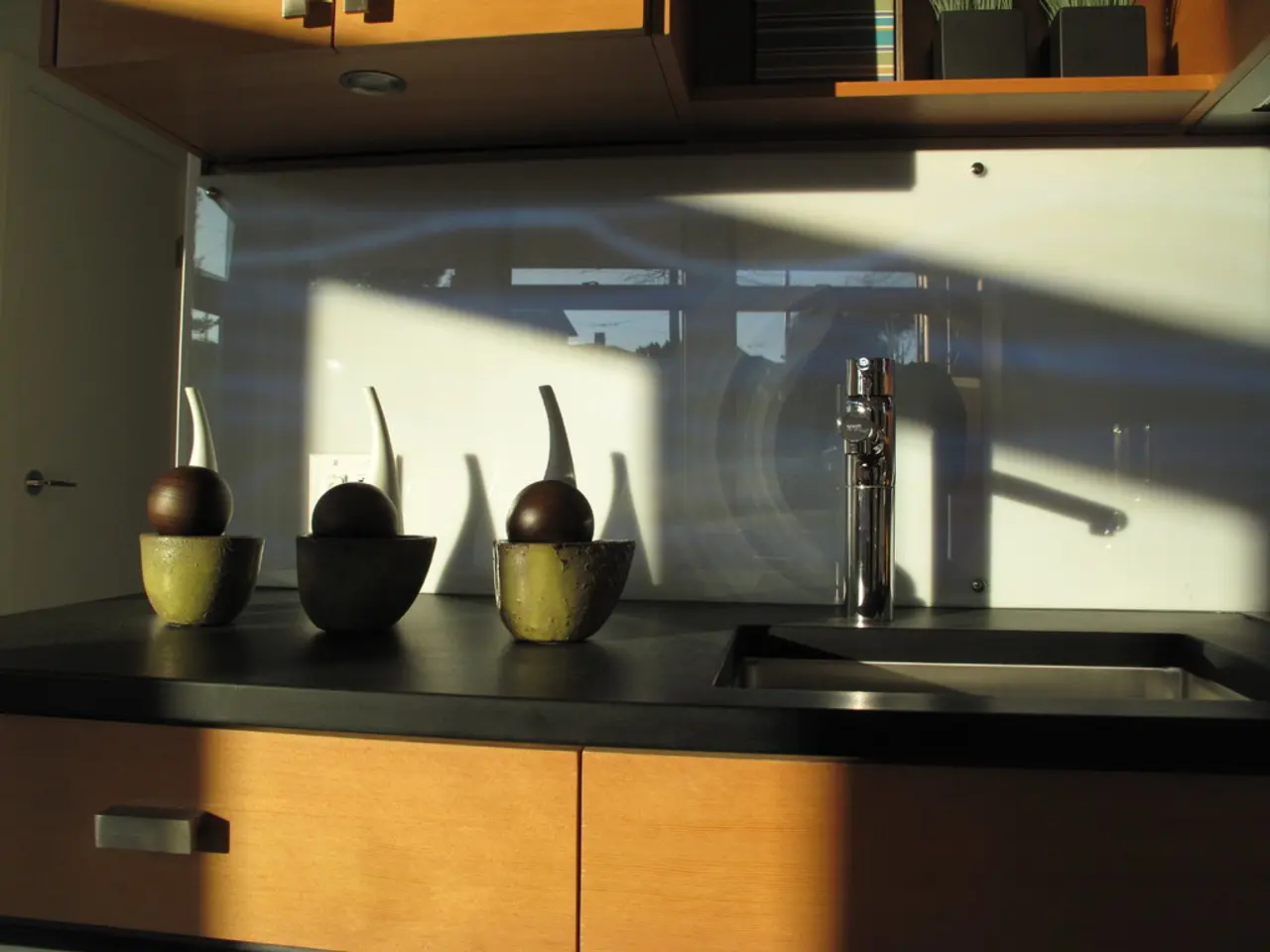Mistakes to steer clear of in kitchen island design, as warned by interior designers
A kitchen island has become a popular feature in many modern homes, serving not only as a workspace for food preparation but also as a socializing and dining area. However, designing a functional and efficient kitchen island requires careful consideration to avoid common mistakes.
One of the most common oversights is failing to account for adequate storage. Underestimating storage needs can lead to cluttered worktops and cramped cabinetry. To prevent this, incorporate innovative storage solutions such as pull-out pantries, deep drawers, vertical storage units, and hidden compartments within the island to maximize space and keep the kitchen organized.
Another mistake is oversizing the island. The island should not exceed about 10% of the total kitchen area to prevent crowding and blocking pathways. For kitchens under 13 feet wide, a large island can make movement difficult. In such cases, a rolling or mobile island might be a better option.
Proper clearance around the island is also crucial. Keep at least 36 inches of walkway clearance around all sides, with 42 to 48 inches preferred, to allow doors, drawers, and appliances to open fully and ensure smooth traffic flow. In tight spaces, consider reducing island size, using a peninsula, or foregoing an island altogether if space constraints exist.
The kitchen island's placement should maintain a functional kitchen work triangle, ensuring efficient workflow. The island's position should not interfere with the optimal distances between the sink, stove, and refrigerator.
Neglecting ventilation is another common mistake, especially when the island houses a cooktop. Invest in a high-quality ventilation system that vents outside or a good ductless hood with regular filter maintenance to prevent cooking odors lingering in the kitchen.
When deciding between a sink or a hob on a kitchen island, evaluate cooking habits and space constraints to determine the best option. If you enjoy entertaining and hosting gatherings, a hob on the island can be a practical choice as it allows you to interact with guests while preparing meals. However, if space is limited or if you prefer a more streamlined look, a sink may be a better option.
The choice of material for a kitchen island should focus on durability and practicality, balancing style with functionality and practicality. Selecting materials that are difficult to maintain or clash with the surrounding décor can detract from the overall look of the kitchen and make it feel disparate and inconsistent.
Positioning the kitchen island too close to other kitchen elements can disrupt workflow, creating bottlenecks. In galley kitchens, an island can work as long as there's sufficient width to maintain clear walkways on either side.
A poorly designed kitchen island can be a costly and cumbersome addition, potentially turning a kitchen into a culinary disaster zone. By respecting size proportions, circulation space, storage requirements, ventilation, and the overall kitchen layout, most common kitchen island design mistakes can be prevented, resulting in an efficient, comfortable, and aesthetically pleasing kitchen space.
[1] Kitchen Island Design: A Comprehensive Guide
[2] Kitchen Island Design: 5 Common Mistakes to Avoid
[3] Kitchen Island Design: How to Get It Right
[4] Kitchen Island Design: The Ultimate Guide
[5] Kitchen Island Design: A Detailed Guide
- Adequate storage solutions such as pull-out pantries, deep drawers, vertical storage units, and hidden compartments can help in maximizing space and keeping the kitchen organized.
- To prevent crowding and blocking pathways, the island should not exceed about 10% of the total kitchen area.
- Proper clearance around the island is crucial, with at least 36 inches of walkway clearance recommended, and 42 to 48 inches preferred.
- The kitchen island's placement should maintain a functional kitchen work triangle to ensure efficient workflow.
- Neglecting ventilation can lead to lingering cooking odors, so investing in a high-quality ventilation system or a good ductless hood with regular filter maintenance is essential.
- When deciding between a sink or a hob on a kitchen island, evaluating cooking habits and space constraints is crucial to determine the best option.
- The choice of material for a kitchen island should focus on durability, style, and practicality, to avoid materials that clash with the surrounding décor or are difficult to maintain.




